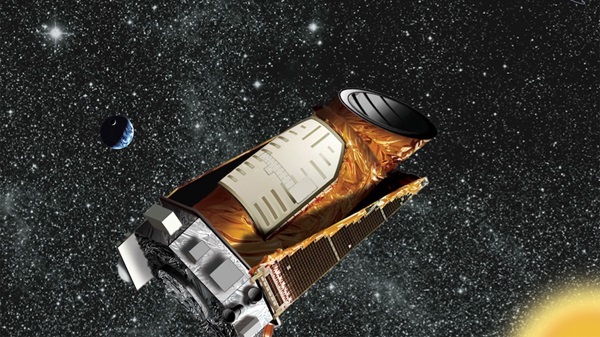HUNTING FOR EARTH LIKE PLANETS
HUNTING FOR EARTH-LIKE PLANETS
(This article was published in 2009 and was written in the context of the launching of the Kepler Space Telescope by NASA to search for planets of different star systems in their habitable zones.)
Nikunja Bihari Sahu
Are we alone in this vast universe? Is our planet the only one of its kind? Does life exist in other worlds? These are some o the questions which have puzzled mankind for ages. NASA’s Kepler telescope promises mankind answers to some of these questions. The mission is a space telescope, which using a Photometer developed by NASA, will examine over 1,00,000 stars in the deepest part of our Universe during its lifetime for earth-like planets that orbit around sun-like stars in their warm habitable zones where liquid water essential for life could be found. The Kepler telescope opened its eyes on March 6, 2009, and will not close them for 3.5 years. The mission is named after the German astronomer Johannes Kepler who developed the laws of planetary motion.
Mission Objectives and Goals
Most of the extra-terrestrial planets detected so far are giant planets mostly the size of Jupiter or more. Kepler telescope is designed to look for planets 30 to 600 times less massive (close to the order of Earth’s mass) within the habitable zone of a wide range of spectral-type stars.
Unique Method
Kepler telescope is designed to detect the periodic dimming of stars by their own planets as they pass over their parent stars. Some star systems are oriented in such a way that the planet crosses in front of the stars as seen from the point of view of the Earth. As the planets pass by, they cause their star’s light to be slightly dimmer or winking. The telescope can even detect the faintest of these winks registering a change in brightness of only 20 parts per million. To achieve this resolution, the Kepler telescope uses the largest camera ever launched into space, a whopping 95-megapixel array of Charge Coupled Devices ( CCD). If the Kepler telescope were to look down at a small town on the Earth at night from space, it would be able to detect the dimming of a porch light as somebody passes in its front. The Kepler will watch planets periodically transit over their parent stars for multiple cycles. Earth-sized planets in the habitable zone of stars would theoretically take about a year to complete one orbit. So Kepler will monitor these stars thrice (during its 3 years life span) to conclude the presence of the planets in the star system.
Another Earth, Another World
Once we discover an Earth-like planet in the habitable zone of a star, scientists will immediately look into its atmosphere. This is very hard for planets situated more than 10 light-years distance away. One method is to use Spitzer telescope which uses infrared radiation to look for water, carbon dioxide and methane in the atmosphere. Water is a pre-requisite for life to exist and that is why the planet needs to be at a temperature where liquid water can exist.
Exquisite Detail
Scientists got the first set of images from the telescope within 10 days of its launch that showed a bizarre Jupiter-like planet (known to astronomers before) literally hugging its star in orbit. In the first three months, the precision of the Kepler telescope data has surprised its creators which scientists had never seen these light and shade impressions in such exquisite details before. Planets with distant stars are impossible to be seen with even the most powerful telescopes and scientists rely on indirect methods to deduce their existence. The Kepler telescope is one of such methods and scientists expect announcements about other Earth-like worlds to come in a flurry within a few month. The data from Kepler has sent a ripple of excitement nationwide, especially among planet hunters. Planet hunters have so far discovered 365 planets around stars outside our Solar System. Most of them are large gaseous giants and are only of academic interest. Astronomers generally believe large planets are easier to spot and rocky planets like the Earth may be more numerous in our galaxies which are easier to form. However, these are smaller worlds and difficult to be detected. Kepler's mission promises to find a number of them in the days to come!
Mission Status:
Kepler was launched in 2009. It was very successful at finding exoplanets, but failures in two of four reaction wheels crippled its extended mission in 2013. Without three functioning wheels, the telescope could not be pointed accurately. On October 30, 2018, NASA announced that the spacecraft was out of fuel and its mission was officially ended.
Education Officer
Regional Science Centre
Pt Jawaharlal Nehru Marg
Bhubaneswar-751013




Comments
Post a Comment